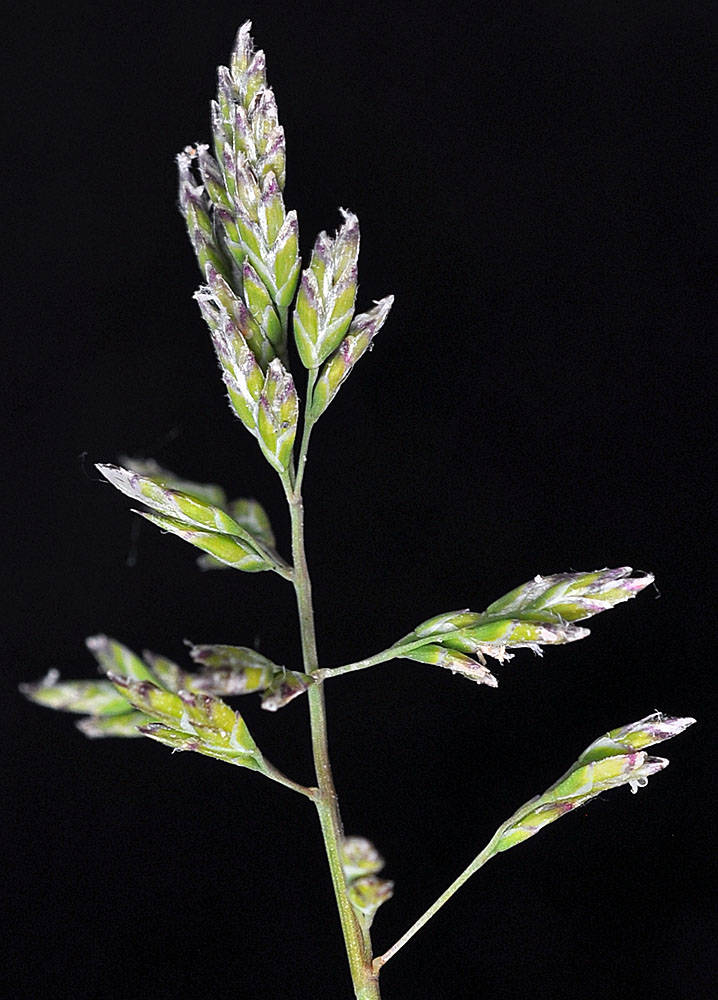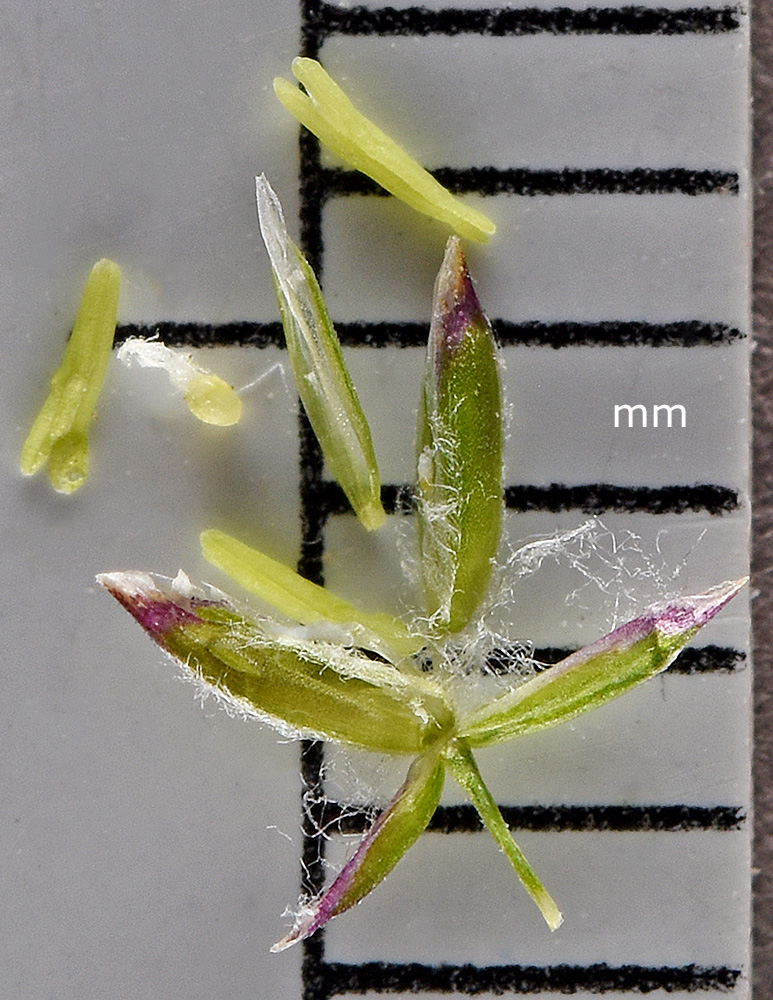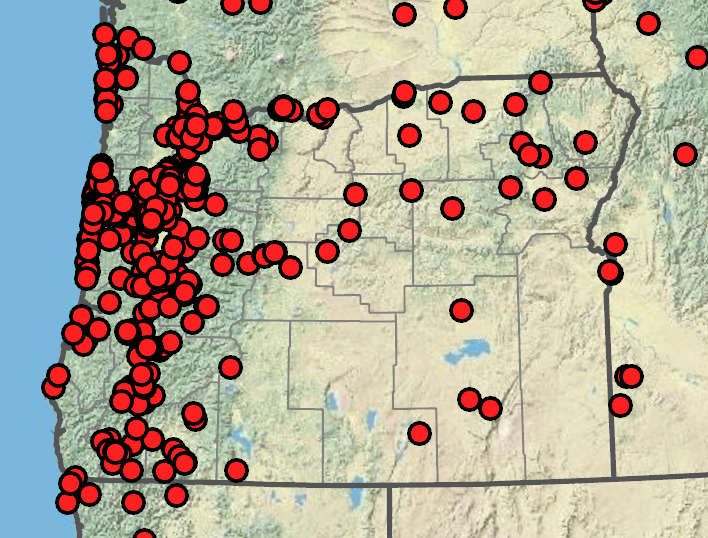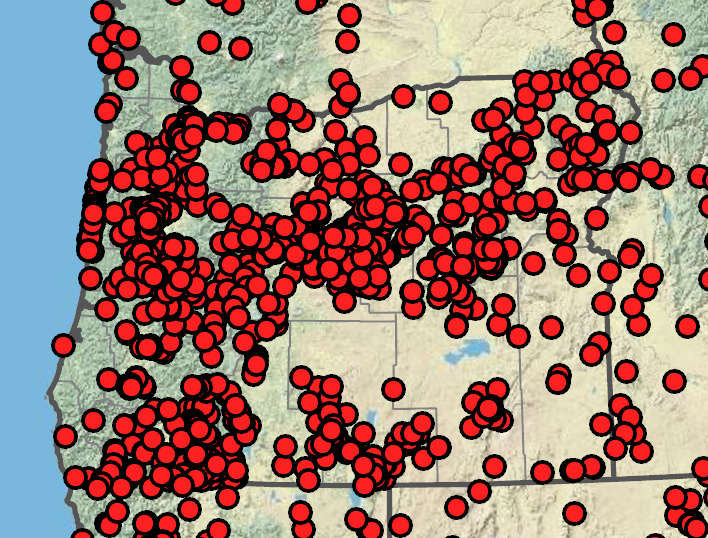Poa annua
Poa pratensis
annual bluegrass
Kentucky bluegrass
nodes terete or weakly compressed.
nodes terete or slightly compressed, 1–2(3) nodes exposed.
intravaginal.
mainly extravaginal or equally extra- and intravaginal.
sheaths closed about 33% of their length;
ligules 0.5–3(5) mm;
blades flat or weakly folded, 1–10 cm × 1–3(6)mm; smooth.
sheaths closed 25–50% of their length, bases of basal sheaths glabrous;
collars smooth, glabrous;
ligules truncate to rounded, 0.9–2(3.1)mm, blades of extravaginal shoots like cauline blades, those of intravaginal shoots; when present, sometimes distinctly narrower; flat to involute, 0.4–1 mm wide;
cauline blades flat or folded; to involute on the margins, 0.4–4.5 mm wide;
lower surfaces smooth, glabrous;
upper surfaces smooth or sparsely scabrous, frequently with sparse; slender hairs 0.2–0.8 mm long; uppermost blades 1.5–10 cm.
1–7(10)cm;
branches ascending to spreading or reflexed.
narrowly ovoid to narrowly or broadly pyramidal, loosely contacted to open, sparsely to moderately congested, 2–15(20)cm;
spikelets (25)30–100+;
branches spreading; (1)2–9 cm long; (1)2–7(9) per node;
spikelets 4–30(50), usually fairly crowded in distal half.
3–5 mm long;
florets 2–6;
rachilla internodes smooth, glabrous; more or less concealed, occasionally exposed;
distal rachilla internode less than 50(75)% of the length of distal lemma.
lower glumes smooth, 1-veined.
glabrous.
lanceolate, 2.5–4 mm, keeled; smooth; keels; marginal veins; and usually intermediate veins crisply puberulent to long-villous, rarely glabrous; area between veins glabrous;
tips obtuse to acute.
0.6–1.1 mm, oblong.
=28.
Poa annua
Poa pratensis
Disturbed areas, parking lots, lawns, shores. 0–1700m. BR, BW, Casc, Col, CR, Est, Lava, Sisk, WV. CA, ID, NV, WA; throughout southern Canada and US; worldwide. Exotic.
Poa annua is a small but abundant annual with spreading inflorescence branches and oblong anthers. Poa infirma is very similar but has ascending inflorescence branches and shorter, nearly spherical anthers. Poa supina, supine bluegrass, has inflorescences similar to P. annua, but it is a stoloniferous perennial with longer anthers. It is planted on shady golf courses and lawns where it forms dense, spongy turf. It has not been found in the wild in Oregon but is expected to escape here.
6 subspecies; 5 subspecies treated in Flora.
Poa pratensis is a common grass with slightly nodding inflorescences and copious cobwebby callus hairs. Poa rhizomata, of rocky ultramafic slopes in southwestern Oregon, is similar but has sparse inflorescences, acute ligules, and unisexual inflorescences. Poa confinis of coastal sands has glabrous (to sparsely hairy) lemmas and diffuse, not tufted callus hairs. Poa wheeleri, a common eastern Oregon species, lacks the lemma hairs and has denser inflorescences and more strongly scabrous leaf sheaths. Poa pratensis is common, polyploid, and highly variable. It hybridizes with related taxa including P. alpina, P. secunda, and P. wheeleri. The resulting variation in P. pratensis can be perpetuated through both sexual and asexual seed production, resulting in many recognizable forms that are linked by intermediates. Most or all Poa pratensis found in Oregon are descended from three introduced subspecies (P. p. ssp. angustifolia, P. p. ssp. pratensis, and P. p. ssp. irrigata).
Rob Soreng, Barbara Wilson, Richard Brainerd, Nick Otting
Rob Soreng, Barbara Wilson, Richard Brainerd, Nick Otting
- Local floras:
BC,
CA,
OR,
WA
- Local Web sites:
CalFlora,
CalPhotos,
Flora NW,
PNW Herbaria
WildflowerSearch
iNaturalist (observations)
USDA Plants Database
- LBJ Wildflower Center
- SEINet
- Plants of the World Online
- Encyclopedia of Life
- Wikipedia
- Google Image Search
- Local floras:
BC,
OR,
WA
- Local Web sites:
Flora NW,
PNW Herbaria
WildflowerSearch
iNaturalist (observations)
USDA Plants Database
- LBJ Wildflower Center
- SEINet
- Plants of the World Online
- Encyclopedia of Life
- Wikipedia
- Google Image Search





